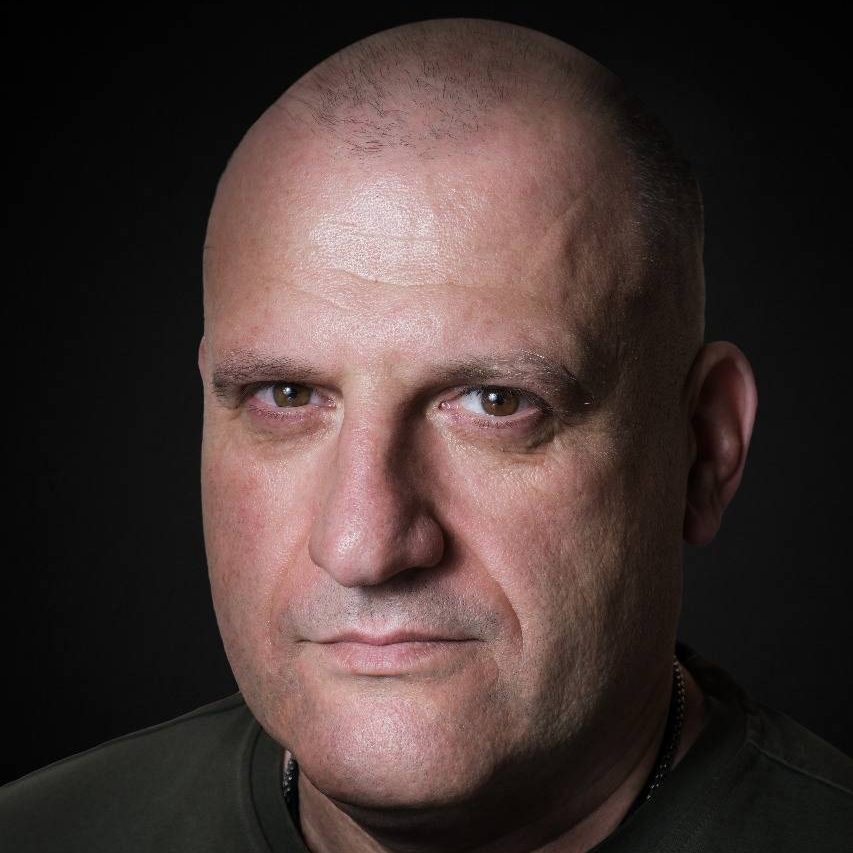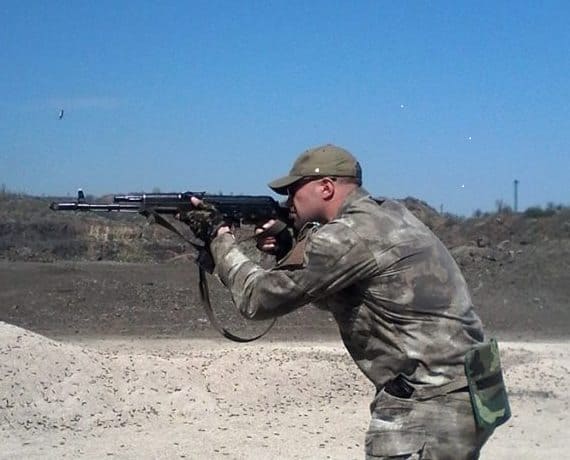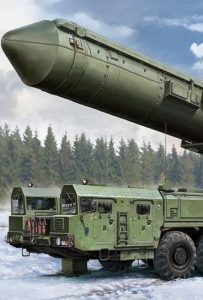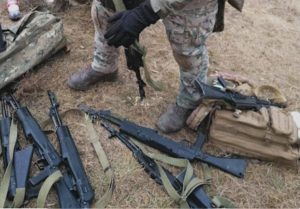Last June, German defence giant Rheinmetall publicly unveiled at Eurosatory 2022 a prototype of its new KF51 Panther tank, which is set to be a next-generation combat vehicle.
The German company wants to strengthen the tank’s ambitions on the world stage due to a radical increase in firepower, armored protection, and the deep integration of modern technologies.
The well of technology—the KF51—is based on the upgraded chassis of the Leopard 2A4 tank. Accordingly, it still retains the usual layout for the MBT, with the driver in front, the combat compartment in the middle, the vehicle commander and gunner, and the powerplant in the aft. The loader in the new tank was replaced by automatic charging.
Nevertheless the upgrade of chassis, developed on the basis of the Leopard 2 tank, will also be proposed in future. A new version will include a place for an additional fourth crew member, who will act as an operator of unmanned systems, or as the commander of a tank unit.

Panther’s combat weight is 59 tons, making the vehicle lighter than most Western main battle tanks at equal or higher levels of protection.
New Protection Concept
Rhainmetall designers offer a new view on the protection scheme of combat vehicles, in which the main role will move away from traditional armor to active and reactive armor. Such a solution, according to the designers, should increase the protection of the vehicle without increasing the additional mass, which in the last Western tanks was approaching a record 70 tons.
The turet of the new tank consists of a steel-welded body over which massive modules of non-explosive reactive armor (NERA) are installed. The latter, in the case of the impact of HEAT ammunition, should neutralize their penetrating capacity due to the difference in density of different layers of materials.
In the photos of the tank, we can see that the modules, whose level of protection depends on the dimensions, protect not only the front projection but also the sides of the turret. The same modules are installed on the chassis of the tank.

The third and last level of protection is from the Rheinmetall StrikeShield active protection system, which, in addition to the already traditional interception of anti-tank guided missiles and HEAT grenades, is also able to shoot down kinetic ammunition, in particular, sub-caliber ammunition.
The StrikeShield APS is based on a system of sensors located in the armor modules along the entire perimeter of the tank, along with which there are also numerous launch countermeasures that, in case of detection of an enemy projectile, intercept it.
The system controls the space around the tank in a radius of 35 meters, which is enough for radars with a smaller range and less energy. Its minimum effective interception distance is only 10 meters, meaning it can neutralize a projectile fired from 10 meters due to its short reaction time. This ability can be particularly useful in urban combat.

Alongside the first system, the Rheinmetall TAPS active protection system should also be installed on the vehicle, which will protect the upper hemisphere of the tank from flying drones and ammunition.
Complementing all this is the Rheinmetall Rapid Observing System (ROSY), a smoke grenade launcher on each side of the turret.

Total firepower advantage
The main innovation in the field of firepower in KF51 was the integration of the promising Rheinmetall Rh-130 L/51 130mm smoothbore gun.
The new gun, according to the developers, has a 50% greater effective range than the Rheinmetall 120mm tank guns. In addition, it is expected that promising sub-caliber ammunition of this caliber will be able to penetrate up to 1200 mm of homogeneous armor. The latter should ensure the uncompromising defeat of all serial models of armored vehicles.
It is assumed that the Rh-130 gun’s ammunition will be optimized for two types of rounds: armor-sub-caliber armour-piercing and high-explosive shells with programmable air burst.

The new gun will work together with two drum-type autoloading machines with a capacity of 10 rounds of ammunition each.
Two hatches located in the sides of the turret allow charging the ammunition of the first stage in the autoloading machine for five minutes. An option is available to transport an additional 10 shells to the niches at the rear of the turret.

During tests in April 2022, a gun mounted on the test stand fired three consecutive shots in 16 seconds, which is 5.3 seconds for each. However, they were carried out with stops for inspections, so the real rate of fire will be much faster.
Another increase, compared to the current MBT, should be the installation of the M2HB Browning heavy machine gun twinned with the main gun. This significantly increases the capabilities of the tank compared to the classic scheme with the installation of machine guns of 7.62mm caliber. However, the question remains about its small ammunition, which is only 250 rounds.
Plus, the aft part of the turret can be strengthened with a Rheinmetall Natter remote weapon station, which can be armed with a 7.62mm machine gun. It is assumed that, in conjunction with the sensor system, it will be able to fire on small drones.
Driveability and Intelligence
Better orientation in space and reconnaissance capabilities should become one of the main advantages of a combat vehicle among its competitors. This can be achieved by integrating a large number of sensors and optical systems for all crew members.
For example, the driver has a day and night surveillance channel on the front and rear cameras. In addition, he also has on-board cameras. The vehicle commander also has a panoramic, all-360-degree view.
The KF51 received a fully digital onboard equipment architecture built to the NVGA standard. Each crew member’s workstation ensures tasks getting from another station, while maintaining full functionality. Thanks to this, all crew members workstations are interchangeable without loss of functionality due to the unification of sensors, cameras, and weapons in a single network.
The new combat system involves a wide integration of unmanned systems, in particular a reconnaissance quadcopter for near reconnaissance by the vehicle’s crew.

Integration into the turret of a massive launcher for four HERO-120 loitering munitions should also become an extraordinary innovation on a combat vehicle. The strike drone has quite large dimensions, in particular, its length is 1.5 meters.
The new means should expand the zone of possible damage beyond the direct fire of the tank to a distance of up to 40 kilometers. In addition, the drone will also be able to explore the area and hit objects beyond their visual range.
The fourth crew member is supposed to be involved exactly to operate unmanned and electronic systems.

Future and present threats
The maximum integration of advanced solutions and technologies in the future should make KF51 a tough opponent on the battlefield. However, today it is just a prototype. The chassis of the tank and the rights to manufacture it belong to another German company, Krauss-Maffei Wegmann. Therefore, the future of this project still remains distant and ghostly.
As to the vehicle’s tech, it is worth noting that its innovations are already posing problems for potential buyers. In December 2023, Hungary entered the program for the development of the vehicle with the condition of installing on it a classic Rh-120 120mm gun. They called a new combat vehicle ‘KF51 Panther EVO’.
By installing the old tank gun, in fact, the entire potential advantage of the tank in terms of firepower was reduced to zero due to the inability of customers to switch to a new type of ammunition.
Complicities in design can be named as another disadvantage of the tank. Those are, for example, the use of a complex two-bar loading mechanism or a launch barbel for barraging drones. The latter, in addition, will not be constantly involved in the battle, which accordingly raises questions of expediency.
The experience of the Russian-Ukrainian war, or, to be more precise, the experience of two countries and their mobilized economies, shows the need for large volumes of simple and reliable equipment, as well as their advantages over complex and expensive solutions.
Thus, the use of tanks today is more likely limited to causing damage to infantry and fortifications. The fights against other tanks happen very rarely and rather can be a forced action. Tanks, regardless of the level of technology, equally suffer losses from minefields, artillery, drones, and ATGMs. Accordingly, the parameters of reliability, repairability, and mass production factors come into focus.
At the same time, it is worth noting that the designers of the KF51 paid attention to the latest global trends and integrated an active defense system to counter the main threats of tanks on the front line: anti-tank missiles and drones. In particular, for the first time, special attention is paid to the protection in the upper hemisphere.
In addition, modern communications and surveillance devices that provide the so-called “transparent/glass armor,” i.e., help to provide high command handling and orientation of the tank crew in space, might be a really strong point of the combat vehicle.
SUPPORT MILITARNYI
Even a single donation or a $1 subscription will help us contnue working and developing. Fund independent military media and have access to credible information.


 Вероніка Грищенко
Вероніка Грищенко 
 Андрій Соколов
Андрій Соколов 
 Urich
Urich 
 Андрій Харук
Андрій Харук 
 Контужений Безпілотник
Контужений Безпілотник 

 Центр ініціатив ПЖ
Центр ініціатив ПЖ 



 Vadim Kushnikov
Vadim Kushnikov 
 Андрій Тарасенко
Андрій Тарасенко 
 Юрій Юзич
Юрій Юзич 


